1:72 North American Aviation F-100D-25NA Super Sabre 56-2927 "Thor's Hammer", 309th Tactical Fighter Squadron “Dusty Ducks”, 31st Tactical Fighter Wing, United States Air Force, Tuy Hoa AB, South Vietnam (HobbyMaster) 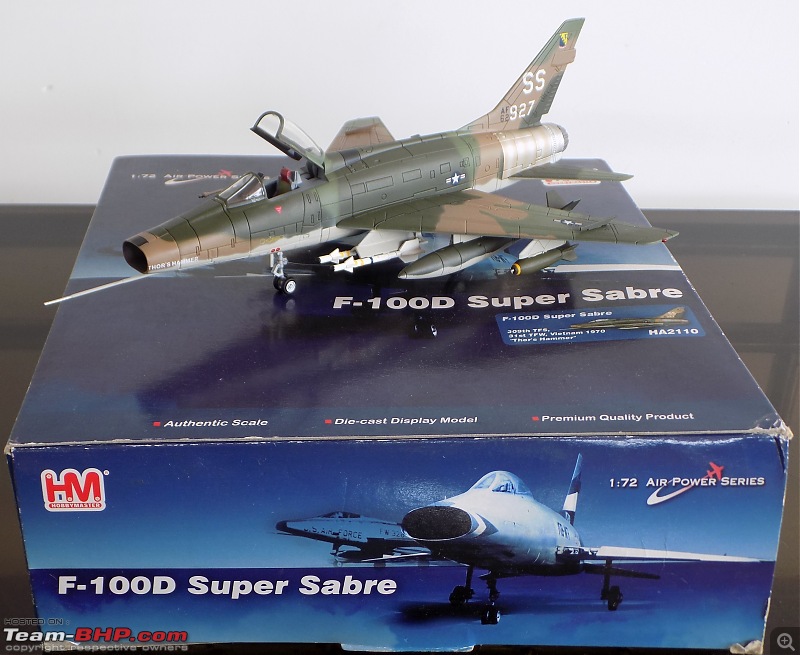 Type:
Type: Single-seat fighter and fighter-bomber
Powerplant: One 10,200 pounds thrust (45 kN) Pratt & Whitney J57-P-21/21A turbojet engine rated at 16,000 pounds thrust (71 kN) with afterburning
Performance: Maximum speed, 864 miles per hour (1390 km/h) or Mach 1.13; rate of climb, 22,400 feet per minute (114 meters per second); service ceiling, 50,000 feet (15000 m); range 1,995 miles (2310 km)
Weights: Empty weight, 21,000 pounds (9500 kg); loaded weight, 28,847 pounds (13085 kg); Maximum takeoff weight, 34,832 pounds (15800 kg)
Armament: Four 20mm Pontiac/Philco-Ford M39A1 revolver cannons with 200 rounds per gun and up to 6,000 pounds (2722) of external ordnance, typically one AGM-12 (ASM-N-7) Bullpup air-to-ground missile and one AIM-9B Sidewinder air-to-air missile or six Mark 82 Snakeye 500-pound (227-kg) conventional bombs or one Mark 7 nuclear bomb
First flight: May 25, 1953 (F-100A); Sept. 9, 1955 (F-100C); Jan. 24, 1956 (F-100D); Aug. 3, 1956 (TF-100C); March 7, 1957 (F-100F)
Number built: 2,294 (including 1,274 F-100D)
The North American F-100 Super Sabre was an American supersonic jet fighter aircraft that served with the United States Air Force from 1954 to 1971 and with the Air National Guard until 1979. The first of the Century Series of USAF jet fighters, it was the first USAF fighter capable of supersonic speed in level flight. The F-100 was designed by North American Aviation as a higher performance follow-on to the F-86 Sabre air superiority fighter.
Adapted as a fighter-bomber, the F-100 was supplanted by the F-105 Thunderchief for strike missions over North Vietnam. The F-100 flew extensively over South Vietnam as the air force's primary close air support jet until being replaced by the more efficient subsonic LTV A-7 Corsair II. The F-100 also served in other NATO air forces and with other U.S. allies. In its later life, it was often referred to as the Hun, a shortened version of "HUNdred"
The initial F-100 variants( F-100A/C) were not wired to carry the AIM-9 sidewinder (some were wired for AIM-9s later). They also suffered from several issues due to flight instability, structural failures and hydraulic system failures. The definitive "D" variant of the F-100 aimed to address the offensive shortcomings of the F-100C by being primarily a ground attack aircraft with secondary fighter capabilities. To this effect, the aircraft was fitted with autopilot, upgraded avionics, and, starting with the 184th production aircraft, AIM-9 Sidewinder capability. Many F-100Ds were modified to also fire the AGM-12 Bullpup air-to-ground missile. To further address the dangerous flight characteristics, the wing span was extended by 26 in (66 cm) and the vertical tail area was increased by 27%.
In 1957, F-100D fitted with an Astrodyne booster rocket making 150,000 lbf (667.2 kN) of thrust successfully performed a zero length launch (ZeLL). This was accomplished with the addition of a large canister to the underside of the aircraft. This canister contained a black powder compound and was ignited electro-mechanically, driving the jet engine to minimal ignition point. The capability was incorporated into late-production aircraft. The pilot who flew the F-100 during its ZeLL trials was Major Robert F. Titus, who later went on to fly 400 combat missions over Vietnam and destroyed three MiG-21s in aerial combat.
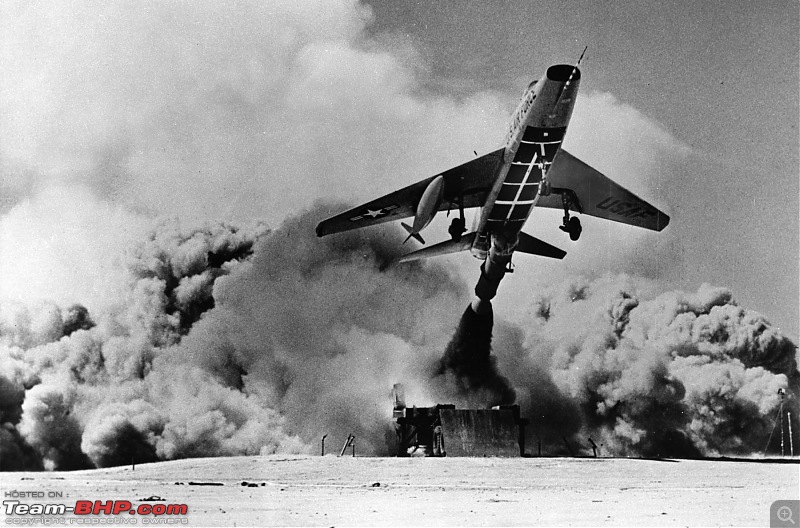
The F-100D was also equipped with a LABS( Low altitude Bombing System) Computer that enabled the pilot to release the bomb at the correct angle using the Toss Bombing method of aerial bomb delivery. The purpose of toss bombing is to compensate for the gravity drop of the bomb in flight, and allow an aircraft to bomb a target without flying directly over it. This is in order to avoid overflying a heavily defended target, or in order to distance the attacking aircraft from the blast effects of a nuclear (or conventional) bomb.
The LABS was a set of gyros and a rudimentary mechanical computer linked to a fist-size, circular cockpit instrument, the dive-and-roll indicator. The equipment weighed only a few pounds, was easily installed, and almost immediately available, and it could consistently hit a circle with a radius of 1,500 feet. With nuclear weapons, as with horseshoes, close counts.
Operation was simple. The pilot had a set of very precise maps from which he selected a visual point on the ground, called an initial point (IP), close to the target. The pilot loaded the time from the IP to the target into the LABS prior to the mission. After takeoff, he visually navigated to the IP, and the instant he crossed over it and began his run to the target, he pressed the bomb release “pickle” button to activate the LABS, then fixed his attention on the dive-and-roll indicator.
The dive-and-roll indicator had two needles, a horizontal one for pitch and a vertical one for direction. When the aircraft reached the calculated release point, about two and a half miles from the target, the needles cued the pilot to climb and guided him to the release point.
Les Frazier, an F-100 pilot who flew many LABS missions, describes the sequence this way: “Just prior to the pull-up point, the horizontal needle on the LABS dropped down, and the pilot pulled back on the stick to bring the needle back to level. The horizontal needle led the aircraft into a 4-G climb in two seconds, while the vertical needle showed the course. Keeping both needles centered kept the aircraft lined up, and for several seconds this was the pilot’s entire world—it was about as easy as pushing an oyster into a slot machine. The bomb released automatically with a loud wham that could be heard in the cockpit, and the airplane would oscillate from side to side as the weapon was blown clear.”
The F-100 served as a fighter bomber in the Vietnam war.The Hun was used extensively as close-air-support in South Vietnam. It flew interdiction strikes, reconnaissance, rescue combat patrol and attacked enemy anti-aircraft locations. The F-100D in On-call CAS role was picturized in the movie "We were Soldiers".
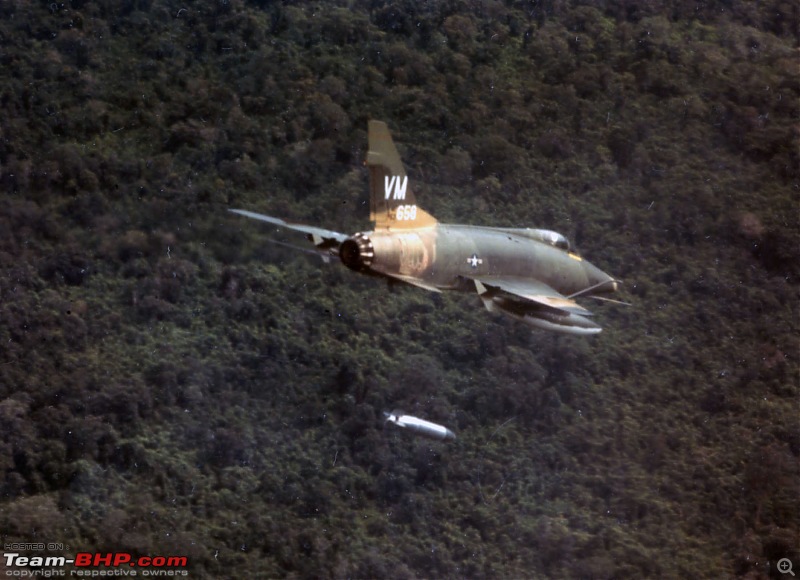
Twin seat F-100Fs went on to serve as in dedicated Wild Weasel role and in the FAC role in Vietnam.
F-100D 56-2927 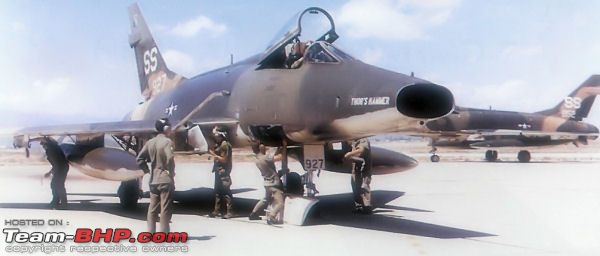
56-2927 flew with the 309th TFS “Dusty Ducks” who arrived at Tuy Hoa AB, South Vietnam on December 6, 1966 and remained there until September 8, 1970. The 31st TFW commanded five F-100 squadrons and was the most important F-100 wing in South Vietnam. 31st TFW squadrons took part in the Tet Offensive, the Siege of Khe Sanh and the extraction of friendly troops from Kham Duc. The 31st reached 100,000 combat sortie milestone in September 1969. In 1970 the 309th returned to Homestead AFB and began
flying the F-4E.
F100D 56-2927 was hit by small arms fire near Xom Moi 10 miles south of airfield at Phan Rang, South Vietnam on Feb 19, 1967. The aircraft was able to fly to the coast where pilot ejected and was rescued by USAF HH-43 Husky helicopter.
Outside Aviano AIr base in Italy, a F-100D stands as a gate guard which is painted in the markings of Thor's Hammer. The donor F-100D was a derelict airframe that was restored by 31st TFW personnel with fake serial 56-2927 and transferred to Aviano AFB. It also wears the Vietnam tail code “SS” of the 309th TFS, 31st TFW at Tuy Hoa Air Base, South Vietnam.

Office of the F-100D from the flight sim Strike Fighters 2

Thor's Hammer Indeed






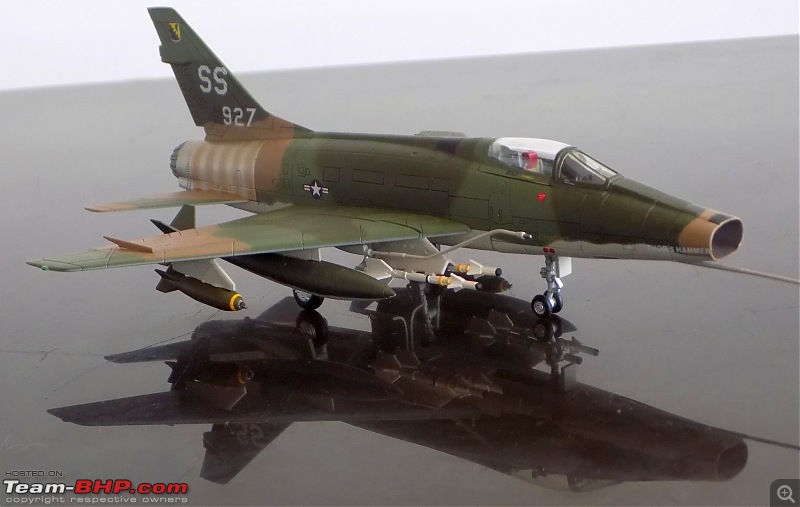
31st TFW emblem on the tail fin:

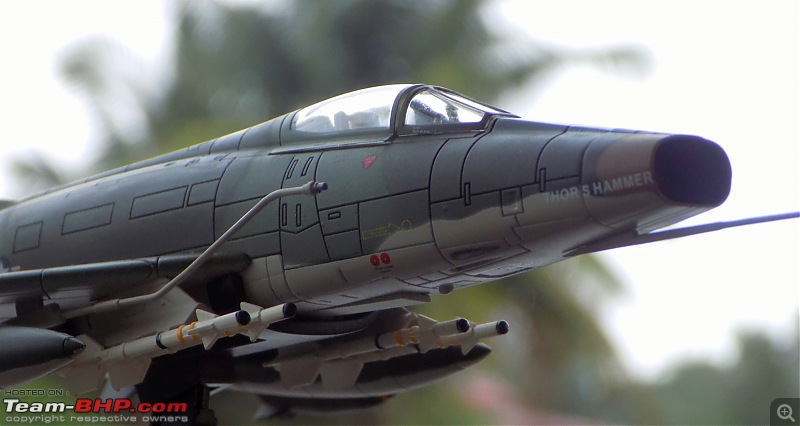


The removeable inflight refueling probe extended from the starboard wing. Initially, the refueling probe was straight, but it was eventually changed to an upward-curved configuration; it made in easier for pilots to see the probe and drogue at the same time while mating them with the tanker. According to the story, a pilot damaged a straight probe during a tanker rendezvous, bending it upward, and reported that made it easier to use, with the recommendation being adopted for production. North American also developed a "buddy" tanker pod to allow an F-100 to be operated as a tanker, but it was never used in service.

"Straight" refuelling probe. The model comes with extra set of bombs that can be mounted in place of the Sidewinders
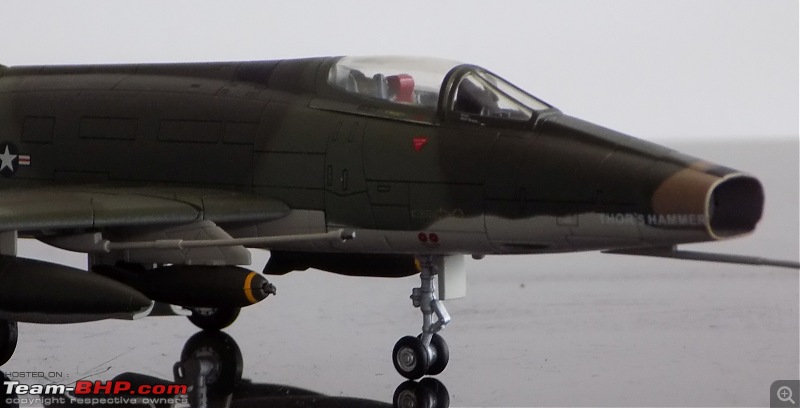
 (1)
Thanks
(1)
Thanks
 (1)
Thanks
(1)
Thanks

 (1)
Thanks
(1)
Thanks
 (1)
Thanks
(1)
Thanks

 (1)
Thanks
(1)
Thanks
 (3)
Thanks
(3)
Thanks
 (3)
Thanks
(3)
Thanks
 (1)
Thanks
(1)
Thanks
 (3)
Thanks
(3)
Thanks

 (1)
Thanks
(1)
Thanks
 (4)
Thanks
(4)
Thanks

 (1)
Thanks
(1)
Thanks





 All my attempts to track it have failed. :-( I hope it fires a big warhead on that worthies nut.
All my attempts to track it have failed. :-( I hope it fires a big warhead on that worthies nut.
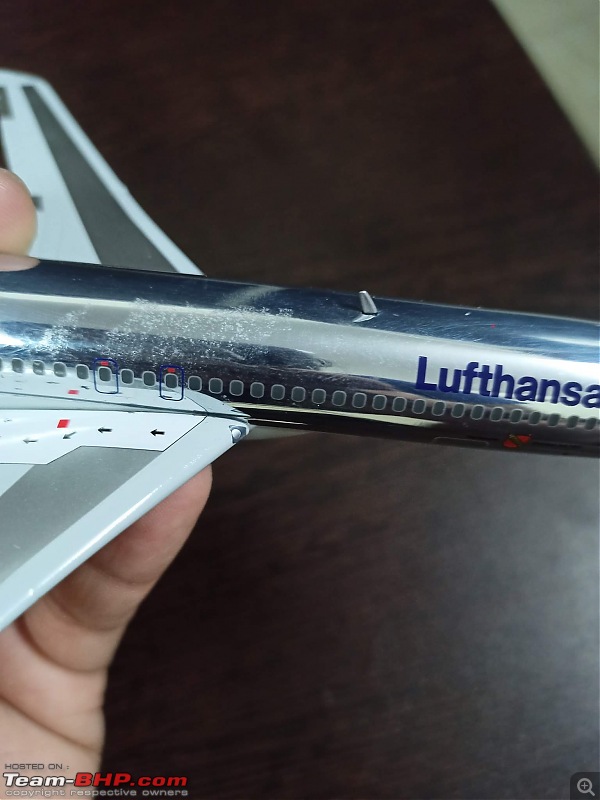


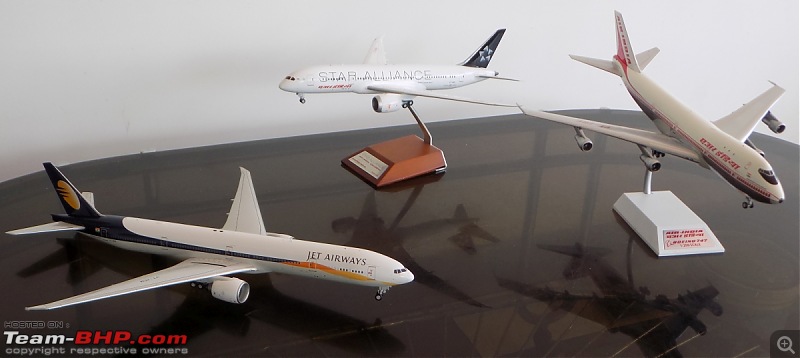
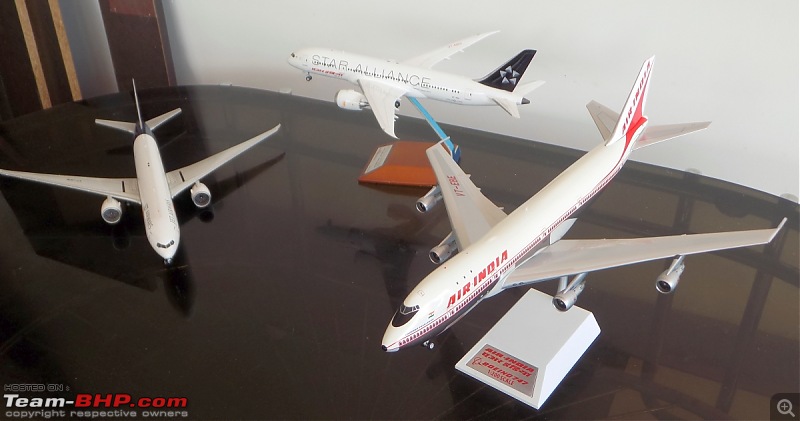


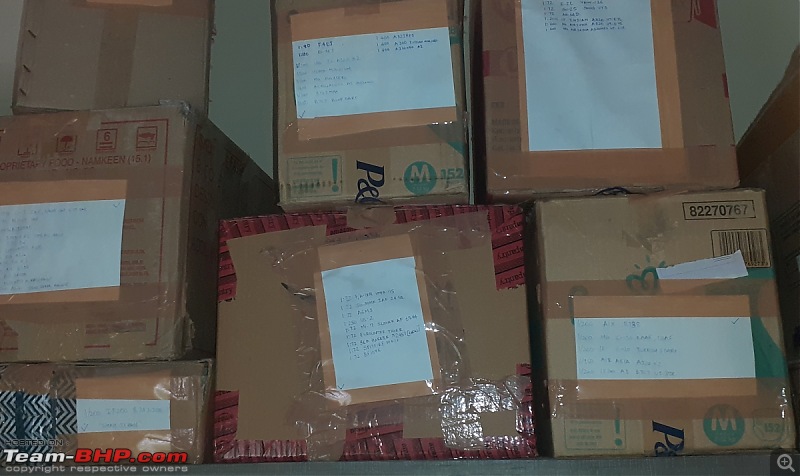



















 F-100 was an outstanding aircraft in all ways and like its Soviet counterpart the MiG-19 proved reliable and rugged. It is one Vietnam era aircraft I have lusted for despite my misgivings of America's role in that tragic war. 100,000 combat sorties by just one Air Group! - what a number! I learnt a new piece about that air to air refueling probe.
F-100 was an outstanding aircraft in all ways and like its Soviet counterpart the MiG-19 proved reliable and rugged. It is one Vietnam era aircraft I have lusted for despite my misgivings of America's role in that tragic war. 100,000 combat sorties by just one Air Group! - what a number! I learnt a new piece about that air to air refueling probe.